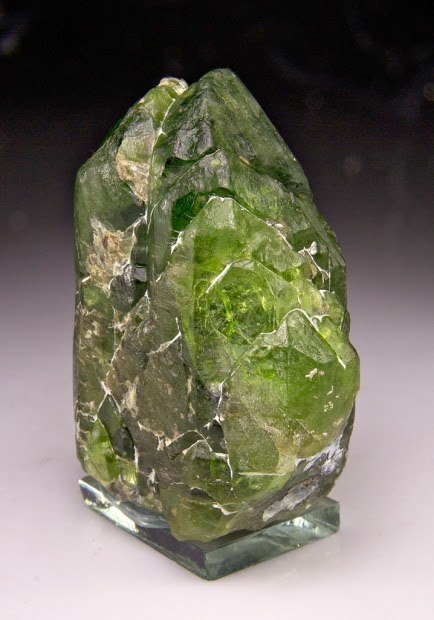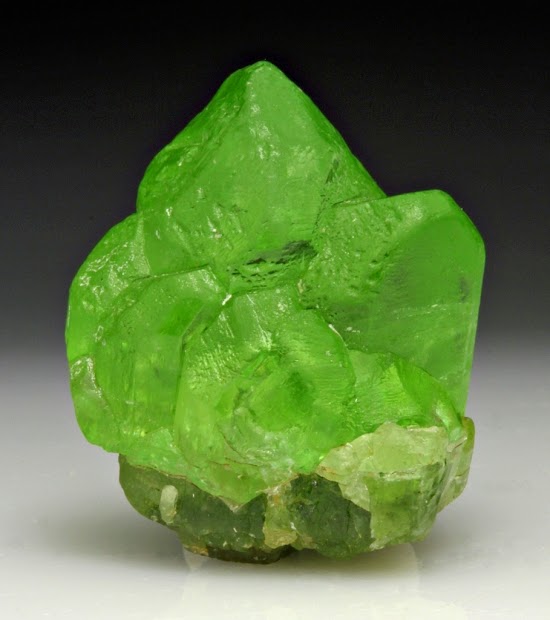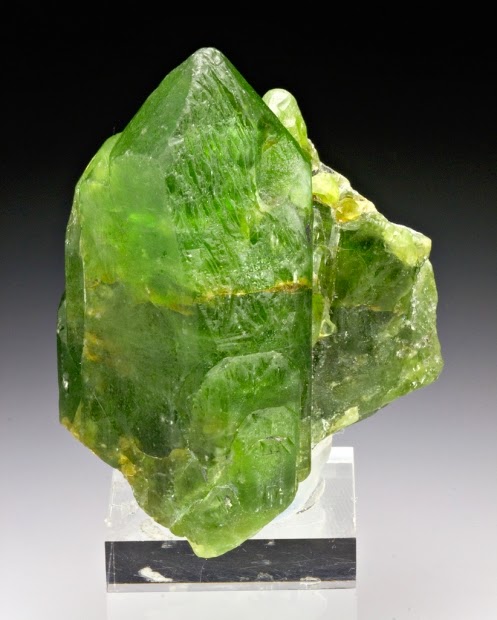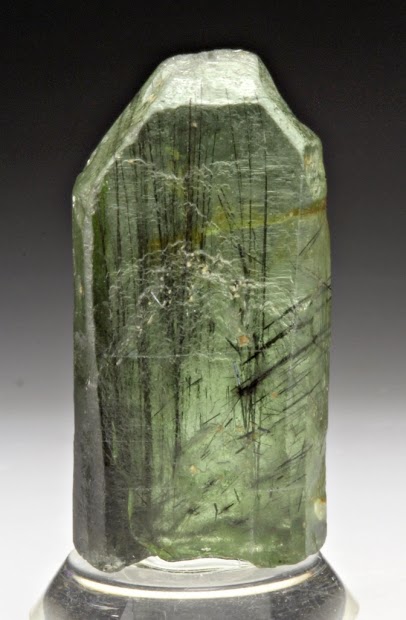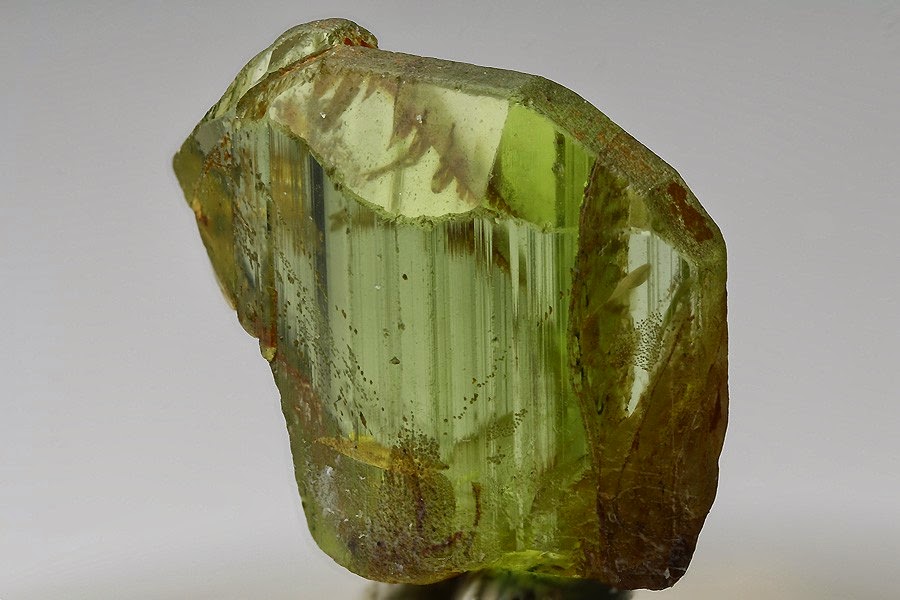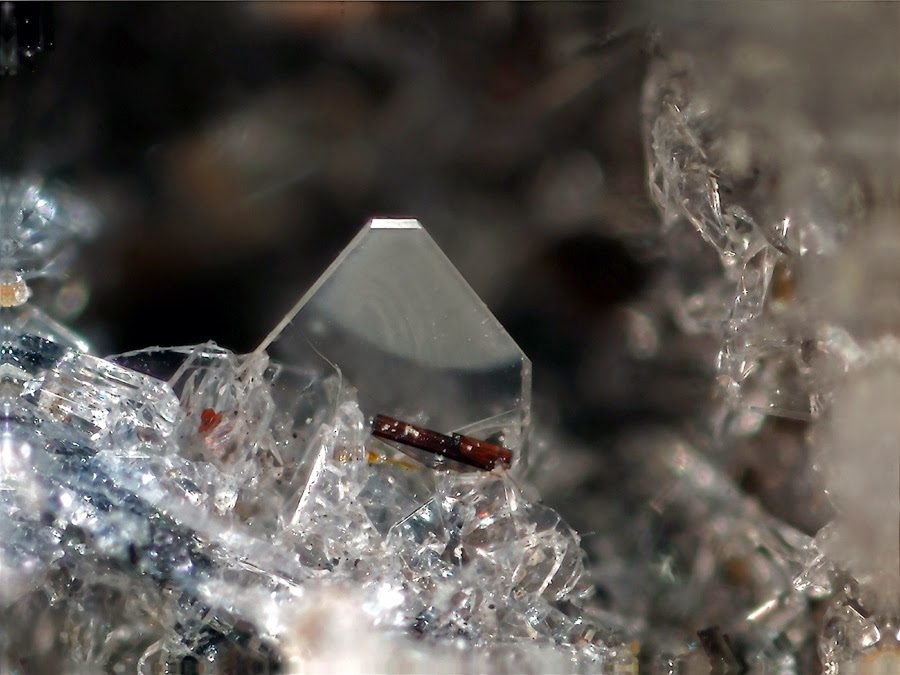
Chemical Formula: Mg2SiO4
Locality: Mte. Somma, Vesuvius, Italy.
Name Origin: Named for Johann Forster, German naturalist.
Forsterite (Mg2SiO4; commonly abbreviated to Fo) is the magnesium rich end-member of the olivine solid solution series. Forsterite crystallizes in the orthorhombic system (space group Pbnm) with cell parameters a 4.75 Å (0.475 nm), b 10.20 Å (1.020 nm) and c 5.98 Å (0.598 nm).
Forsterite is associated with igneous and metamorphic rocks and has also been found in meteorites. In 2005 it was also found in cometary dust returned by the Stardust probe. In 2011 it was observed as tiny crystals in the dusty clouds of gas around a forming star.
Two polymorphs of forsterite are known: wadsleyite (also orthorhombic) and ringwoodite (isometric). Both are mainly known from meteorites.
Peridot is the gemstone variety of forsterite olivine.
Physical Properties
Cleavage: {001} Good, {010} Distinct
Color: Colorless, Green, Yellow, Yellow green, White.
Density: 3.21 – 3.33, Average = 3.27
Diaphaneity: Transparent
Fracture: Conchoidal – Fractures developed in brittle materials characterized by smoothly curving surfaces, (e.g. quartz).
Hardness: 6-7 – Orthoclase-Quartz
Luminescence: Non-fluorescent.
Luster: Vitreous (Glassy)
Magnetism: Nonmagnetic
Streak: white
Photos :
